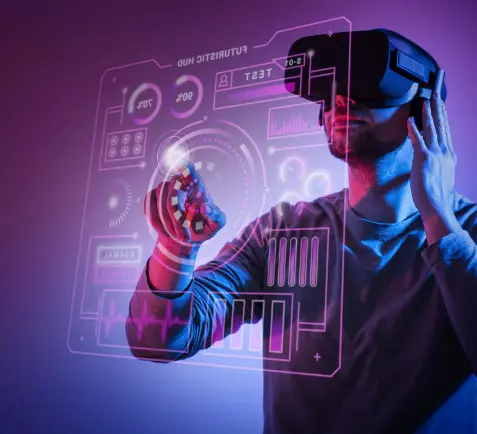As of last year, over 60% of new power capacity in the United States came from renewable sources, a trend largely facilitated by the rise of smart grids. This not only highlights the rapid shift in our energy landscape but also underscores the crucial role that smart grids are playing in this transformation. At the heart of this energy revolution are smart grids, which stand as a beacon of innovation and sustainability in our quest for a greener future.
Smart grids represent a seismic shift from the traditional electricity grid. By leveraging cutting-edge technology, they promise to make our energy consumption more efficient, reliable, and sustainable. But what has been driving this rapid evolution? Recent technological advancements have catapulted smart grids from a futuristic concept to a present-day reality, changing how we think about and use energy.
Recent Breakthroughs in Smart Grid Technology
In the past two years alone, have you noticed how the conversation around energy has shifted? This change is largely due to some remarkable breakthroughs in smart grid technology. One of the most notable advancements is the integration of advanced AI algorithms that can predict energy demand patterns with unprecedented accuracy. For instance, a project launched in California in 2022 utilizes AI to forecast electricity demand and adjust the supply from renewable sources accordingly. This predictive capability not only optimizes energy distribution but also significantly reduces waste.
Another significant development is in the field of energy storage. In 2021, a pilot project in Australia successfully demonstrated the use of vanadium flow batteries in a smart grid setup. Unlike traditional lithium-ion batteries, these flow batteries offer longer lifespans and higher safety, proving crucial in stabilizing the grid when integrating unpredictable renewable energy sources.
Furthermore, the role of IoT in smart grids has become more pronounced. A breakthrough project in Europe introduced IoT-based smart meters that not only track energy consumption in real-time but also allow consumers to sell back excess energy generated from rooftop solar panels directly to the grid. This two-way communication not only makes the grid more efficient but also incentivizes consumers to participate actively in energy management.
These examples underscore the rapid pace of innovation in smart grid technology. They are not just incremental upgrades but pivotal developments that are reshaping our energy infrastructure.
Smart Grids – Current Innovations and Future Directions
“Did you know that, as of 2023, over 50 countries have adopted smart grid technologies at a national scale?” This global adoption is more than a trend; it’s a clear indication of the worldwide recognition of the benefits of smart grids. For instance, in Germany, the implementation of smart grids has led to a 30% increase in energy efficiency in the past three years alone. This not only translates to significant cost savings for consumers but also positions Germany as a leader in sustainable energy practices.
In Asia, countries like South Korea and Japan are pioneering in integrating smart grid technology with urban infrastructure. South Korea’s Smart Grid Testbed on Jeju Island, for instance, serves as a global model for efficient energy management and has attracted international investment and collaboration.
Changing Customer Experience
As the name suggests, Smart Grids are not just an upgrade in Grid technology. It also brings a complete transformation in the way customers ‘interact with technology’. This shift is largely due to the advent of technologies that allow for unprecedented levels of interaction between energy providers and consumers.
- One of the most significant changes is the introduction of dynamic pricing models, enabled by smart grids. These models allow consumers to adjust their energy usage based on real-time pricing information, leading to cost savings and more efficient energy use. For example, in the US, solar installation companies like Green Brilliance and others offer smart apps to their customers so that they can have complete supervision of their energy production and consumption. Such solutions also highlight the crucial role of tech companies in making energy management understandable to consumers. Green Brilliance’s customer app developed by Mantra Labs is a vivid example of the same.
- Smart meters are another cornerstone of this transformed experience. In the UK, a recent initiative to install smart meters in homes has empowered consumers with real-time data on their energy consumption, leading to a reported average savings of 10% on their energy bills.
Moreover, smart grids are paving the way for a new era of ‘prosumers’ – consumers who also produce energy. In Denmark, for instance, households with solar panels can feed excess energy back into the grid, receiving compensation and contributing to the nation’s energy supply.
These advancements are not just improving the customer experience; they are revolutionizing the very dynamics of energy consumption and production, making it more participatory, efficient, and aligned with the principles of sustainability.
Current Innovations and Future Directions
Even with these advancements, smart grids face their share of challenges. One of the main hurdles for smart grid implementation is cybersecurity. With grids becoming increasingly digital and interconnected, they are more vulnerable to cyber-attacks. A recent incident in Eastern Europe, where hackers briefly disrupted the grid, serves as a stark reminder of these risks. Addressing this, countries like Canada and the Netherlands are investing heavily in advanced cybersecurity measures for their smart grids, setting a precedent for others to follow.
Another challenge is the high initial investment required for smart grid technologies. Developing nations, in particular, find this cost prohibitive. Innovative solutions, such as public-private partnerships and international grants, have emerged as effective strategies. For example, a joint initiative by the World Bank and India is aiming to bring smart grid technologies to rural areas, demonstrating how collaborative efforts can overcome financial barriers.
What’s Ahead for Smart Grids?
As we look to the future, the potential of smart grids seems limitless. Experts predict that by 2030, smart grids will be capable of integrating over 80% of renewable energy sources into the grid, revolutionizing energy sustainability. Further advancements in AI and IoT are expected to make grids even more efficient and resilient.
The trend towards decentralized energy systems, where local grids operate semi-independently, is likely to grow. This model not only enhances grid resilience but also empowers communities to manage their own energy resources more effectively.
Knowledge thats worth delivered in your inbox




